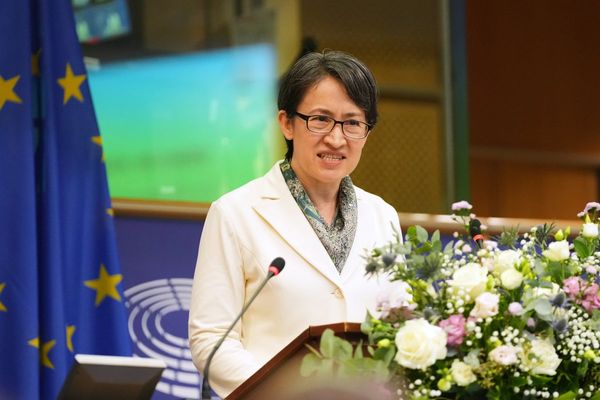
More potholes on the roads, fewer bus services, and libraries and leisure centres shutting their doors for good: the evidence of squeezed local government budgets has been growing across England for more than a decade.
An exclusive Guardian analysis of 13 years of council data has detailed how local spending patterns have changed under austerity budgets. Between 2010-11 and 2022-23, net spending per person on cultural services was cut by 43% in real terms, on roads and transport spending by 40%, on housing by 35% and on planning and development by a third – with more cuts pencilled in for this year.
While some spending changes are a result of evolving responsibilities over the years, for example in education where the academisation of schools has resulted in funding shifting to central government, others are largely down to shifts in budgetary pressure.
Institute for Government figures show the core money available to councils after the recently announced extra £600m uplift will still be 10% lower than in 2010-11. Many councils will be even worse off: Great Yarmouth’s core spending power more than halved between 2010-11 and 2023-24, followed by Hastings (-49.5%), Hyndburn (-49.5%), and Burnley (-48.3%). These councils are all lower-tier councils with no responsibility for social care but still face pressures on other services.
Councils are caught between belt-tightening and a duty to spend more on key areas such as child social care (up by 36% per person since 2010-11) and homelessness (where spending has more than doubled). As a result, the axe has fallen elsewhere.
After taking inflation and population growth into account, net spending on sport and leisure facilities fell to £7.09 per person in 2022-23 – down 44% from £12.66 when the Conservative-Liberal Democrat coalition government took power. England has lost almost 400 swimming pools since 2010.
Councils cut spending on sports development and community recreation by 59% per person over the same period, and on parks and open spaces by a third – from more than £20 per person to £13.81.
Spending on community centres and public halls was cut by 39% and library spending has halved since 2010-11. Museum and gallery spending was cut by two-fifths, while spending on theatres and other public entertainment was cut by 38%.
Less glamorous functions of councils have also been cut. Pest control budgets are down by two-thirds in real terms, with private providers having stepped into the space vacated by councils. Trading standards budgets were cut by 50% and street cleaning by more than a fifth. Waste disposal and collection budgets per person have been squeezed by 11%.
Adding up spending from district and county councils shows there were real-terms spending cuts to cultural activities in almost all of England in the last 13 years, and more than nine in 10 areas made budget cuts to highways and transport services. Some councils have been hit worse than others.
More than half of the areas have made cuts of more than 50% to highways and transport spending since 2010-11, while more than two-fifths have cut spending on sports and cultural activities by more than half.
Croydon, a council that has issued two bankruptcy notices in the last three years, has made the biggest reduction in culture and sport net spending per person, down 85%. It is followed by Herefordshire (-81%) and Windsor and Maidenhead (-81%).
In terms of net highways and transport spending, the sharpest decreases have been in North Yorkshire (-97%), Bath and North East Somerset (-96%) and Lambeth borough (-96%).
Cuts to spending on housing services have occurred in 84% of English council areas since 2010-11, with reductions of more than 50% being made in 49 areas. South Tyneside (-95%), Knowsley (-84%) and Slough (-80%) recorded the largest cuts.
The Unison union’s head of local government, Mike Short, said: “Hard-up communities have been bearing the brunt of cuts for years. But the pace has recently snowballed and councils now have even less cash to work with.
“The neediest are the most likely to lose essential support as key services are axed. Levelling up promised a great deal but has had no real impact on low-income parts of the country. As more services disappear, the areas affected fall further behind. This endless cycle of decline must end. The sensible, sustained funding of local authorities has simply got to happen.”
• This article was amended on 30 January 2024. An earlier version gave examples of council expenditure per person in terms of pence, when they should have been in pounds. An accompanying graphic has also been amended accordingly.







